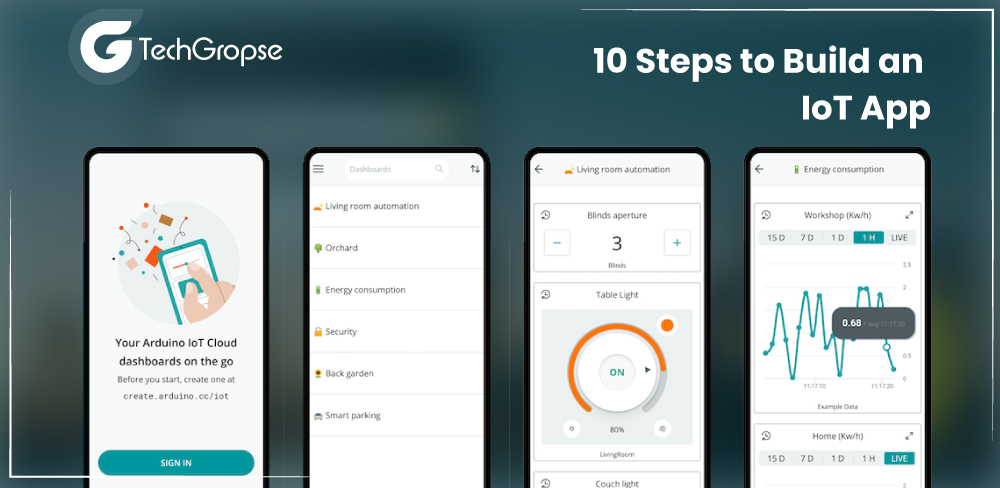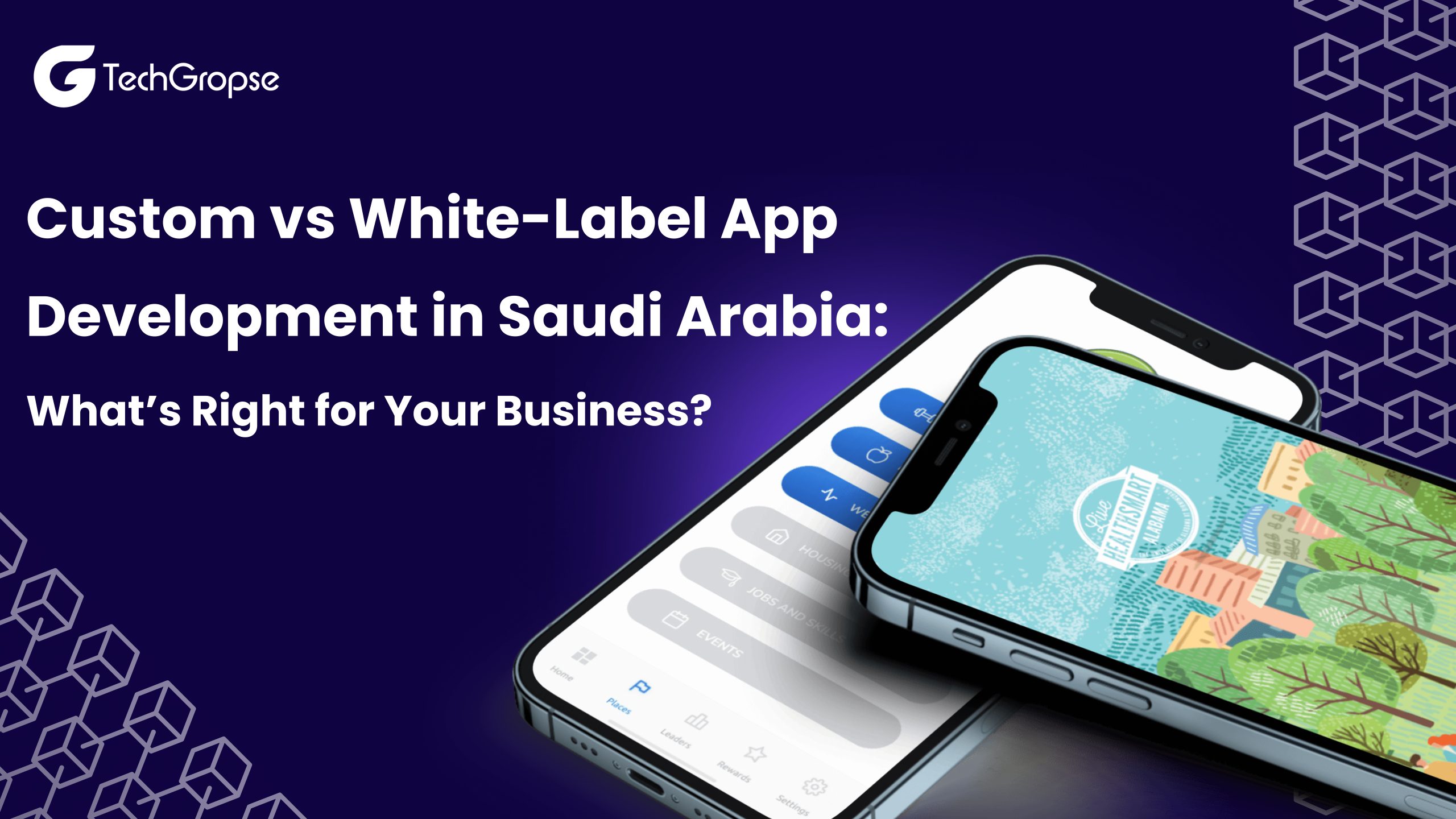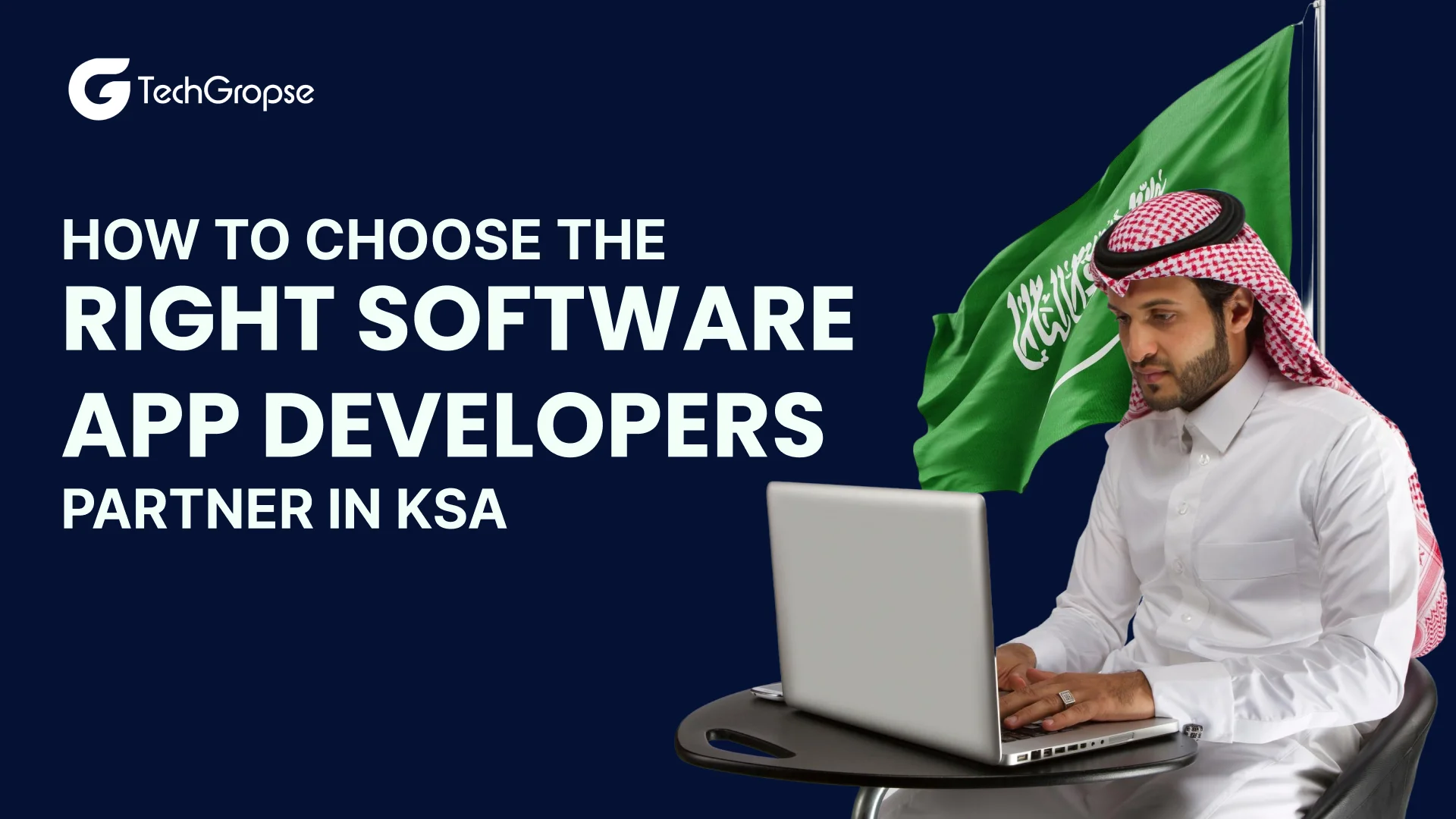The internet of things has revolutionized the way we interact with devices and data. You know that IoT apps have found their way into various industries, from smart homes to healthcare and industrial automation. As a result, small to large enterprises are deciding to build an IoT App. However, building a successful IoT application requires careful planning, execution and a deep understanding of the IoT ecosystem.
In such a case, building an IoT app without technical expertise and knowledge is difficult. If you want to build a functional app, you have to contact professionals who have years of experience and knowledge to handle complex to complex tasks, which means they can do this job easily.
In this comprehensive guide, we will walk you through the essential steps to build an IoT app. Whether you are a seasoned developer or just getting started with IoT, this blog will serve as a roadmap to ensure your IoT project’s success.
What is the Internet of Things?
Internet of things refers to the procedure where sensors, electrical devices and similar gadgets are interconnected without wires. The data can be shared between the devices through a wireless medium that creates real-world objects to behave accordingly. The best part is that you can turn on/off any device via IoT.
A report shows that IoT is estimated to accrue around $3 trillion by the year 2024. In today’s time, every industry is looking at IoT as an excellent opportunity to rebuild customer infra. In simple terms, the IoT market is gaining the highest growth in smart home premises as it changes how people live, work, drive cars and amuse themselves. As a result, the demand for IoT apps is high. However, building an app is a challenging task, so you have to seek the help of an IoT App Development Company.
Top IoT Niches to Build Your Own App
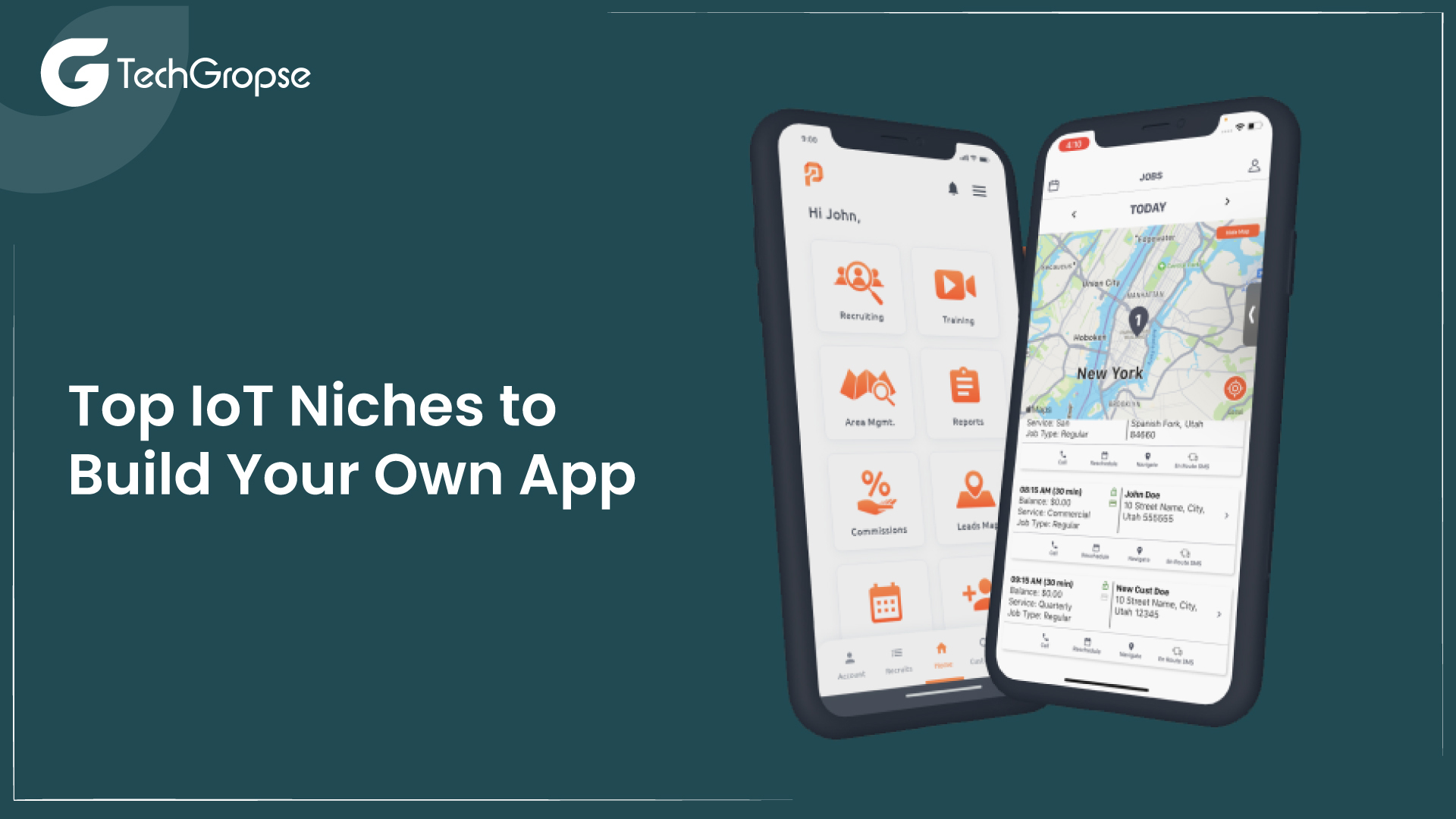
As we mentioned, IoT is getting more popular worldwide. As a result, many companies are looking for professionals to build an IoT app. But you know that the internet of things is currently applied in a wide range of industries. Below are several prominent niches to look out for.
1. Healthcare and Fitness
Wellness and health industries have progressed significantly because of IoT. Various devices, from microscopic sensors to wearable devices, make it easy to track anything from heart rate to activity, allowing users to take better care of themselves. Moreover, fitness and healthcare internet of things hardware may include appliances such as scales and be integrated with smart home systems.
If you want to build a healthcare and fitness app using IoT, it is good to hire dedicated developers who are well-experienced and knowledgeable about building functional and easy-to-use apps.
2. Automotive
Nowadays, people have an opportunity to link their smartphones to their vehicles without any interruption. But it is only possible by IoT. But when extra devices and sensors are added to the car, the owner can do anything from assessing its technical components to parking it effortlessly. As a result, IoT is suitable for the Automotive industry.
However, building an automotive mobile app is a challenging task. In such a scenario, you must search for a reliable mobile app development company with a good reputation and portfolio in the app development industry.
3. Retail
IoT presents retailers with an amazing opportunity in order to improve customer experience. Data collected from an IoT system can assist companies in analyzing client behaviour, optimizing their store journey, organizing warehouses, and more.
We all are aware that self-checkout is always getting very popular. Once buyers pay for the selected goods, sensors let them leave the store, making the shopping easier and quick.
4. Smart Homes
Smart homes have revolutionized the day-to-day life of humans. IoT controls everything, from lighting to security systems, in an owner’s smartphone. The same rule applies to smart cities but at a much bigger scale. Here, IoT technology lets the authorities automate and successfully manage the local infrastructure.
5. Smart Farming:
Agriculture is becoming more and more high-tech with IoT applications. Applications in the field can help farmers monitor soil conditions, automate irrigation, and manage crop health with sensors and connected devices.
6. Connected Vehicle
The automotive industry is adopting IoT technology with connected cars. These applications can provide real-time vehicle diagnostics, GPS tracking and remote control functions. They can also improve safety by detecting and warning drivers of potential hazards.
7. Energy Management
Energy-saving solutions are in high demand. IoT applications that help users monitor and control energy consumption, optimize HVAC systems, and monitor solar panel performance can have a significant impact on sustainability efforts.
The Most Successful IoT Apps
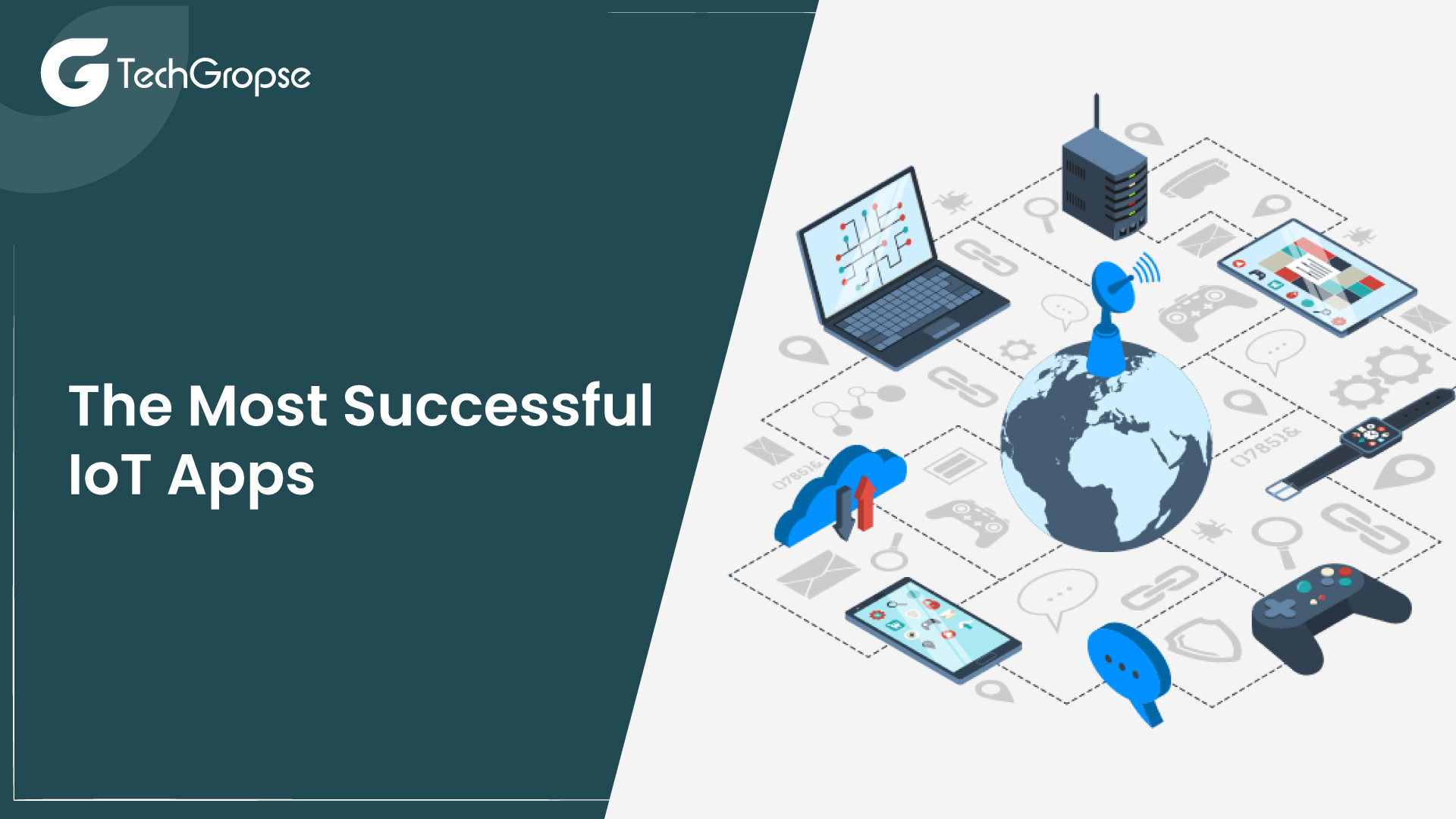
The Internet of Things (IoT) has rapidly changed the way we interact with technology and the world around us. IoT applications have made our lives more convenient, efficient and connected. Among the many IoT applications available today, some have become real success stories, shaping industries and improving everyday lives. As a result, AI and ML development has become more popular. Below, we list the most successful IoT applications and their impact on different industries.
- Nest
Nest, owned by Google, has revolutionized the home automation industry with its smart thermostats and security cameras. These devices collect data to learn about user preferences and adjust settings accordingly, thereby optimizing energy consumption and improving security. Nest’s success lies in its user-friendly interface and seamless integration with other IoT devices. By taking an idea from this app, you can also build an IoT app for your business.
- Fitbit
Fitbit is a pioneer in wearable technology. Its fitness tracker collects data on the user’s physical activity, sleep patterns, and heart rate. Fitbit’s success is due to its ability to motivate users to lead healthier lives through data-driven insights and gameplay elements. In less time, Fitbit gained more popularity because of its amazing features and technology.
- Tesla
Tesla’s electric vehicles (EVs) are more than just cars; they are IoT platforms on wheels. Through over-the-air software updates, Tesla continuously improves the vehicle’s functionality. Features like Autopilot and remote monitoring have made Tesla a leader in the automotive IoT space.
- AmazonAlexa
Amazon’s voice-activated smart assistant, Alexa, has become a household name. It can control lights and thermostats and even order groceries with a simple voice command. Alexa’s success rests on a vast ecosystem of compatible devices and third-party skills.
- Philips Hue
Philips Hue is a smart lighting system that allows users to control the color and intensity of light remotely. It has changed the indoor lighting system by providing a practical, energy-efficient and customizable solution. Its success is evident in the widespread adoption of smart lighting in homes around the world.
- Samsung Smart Things
Samsung SmartThings is an IoT ecosystem that connects and automates various smart devices in your home. It provides users with a centralized hub to control lights, locks, and sensors. Its open-source nature has nurtured a vibrant community of developers that are constantly expanding its capabilities.
These are some popular IoT applications that have gained more popularity over the years. If you want to get more profit and leads, it is good to build an IoT app. However, building an app is not a cakewalk, so you have to search for an IoT application development company that will assist you in every possible way.
Once you search for a mobile app development company, they will provide you with ultimate solutions as per your requirements without compromising on the quality of the project.
Complete Guide to Build an IOT App
Once you know how IoT helps to transform your business, you have to build an IoT app that includes the latest technologies and trends. However, app development has lots of aspects, which is why it is difficult to build an app. Being a developer, if you start to work with IoT, you have to look out the following steps to build an IoT app:
1. Develop a Strategy
There is no doubt that each business has different requirements, and there are no single IoT software development projects for everyday use. Prior to starting the IoT app development, you should work out a strategy with key business leaders. It helps guarantee that users agree with IoT projects and that IoT projects provide great advantages for the enterprise.
In order to make this process easier, you can seek the help of a software development company that will assist you in every possible way to do this job.
2. Be Clear About Business Objectives
The next step is to be clear about the business objectives that clients want from their IoT deployment. IoT usually produces the greatest value for its money in situations where tracking and estimating are followed by enhancement. Once you hire a mobile app development company, they should discover the quantitative data of what the problem is.
Moreover, they will try to track and afterwards optimize the utilization of those resources, or they can install IoT sensors in facilities to follow environmental indicators and later on conduct analytics in order to improve them. So, it is good to seek the help of professionals to build custom software.
3. Achieve the Easier Goal First
Now, it is time to achieve the easier goal. We all know that new technology needs instant and exceptionally high noticeable achievement. If your corporate IoT methodology is steady compared to other company’s IoT projects with a good track record, then you can focus on the easy projects first.
In order to succeed, it is easier to achieve the easier goal. This will assist you in building a functional and easy-to-use application as per the requirements of clients.
4. Calculate the Cost
As mentioned above, each company has different news and requirements. So, it is important to know the cost. Once you know how much a mobile app development company is charging, then it is possible to set a budget accordingly. Moreover, numerous IoT service providers and IoT developers take different charges accordingly.
Companies need to perceive from the start that while they won’t pay much for a couple of sensors for a pilot project, they will see those expenses grow dramatically as they increase. Therefore, you have to know software development cost prior to investing your money.
5. Think About the Customers
The best IoT project implementation usually focuses on user needs. Once you decide to build an IoT, it is essential to think about your customers. By knowing your customers, you can build functional and robust mobile app development solutions, including modern technology and rich features.
You have to ensure that the IoT framework can send messages to the customer’s smartphone when the framework fails, recommending the user change the course.
6. Secure IoT Private Networking
Ensuring the security of data is the most crucial business regardless of what industry you are in. In order to have secure networking, it’s better to build different ways for customers to build IoT private networks from end to end.
Regardless of whether you are using AWS VPC peering, AWS direct connect or IoT LANs, you have to make sure that you allow your customers to scale their business without compromising on their data.
7. Strengthen Safety Precautions
If you use raw IOT information from search engines, this data may bring you bugs, malware, viruses and other security issues. For companies making use of IoT data, IoT security practices ought to be rethought to guarantee the safety of local and wide area networks. It will assist you to build an IoT app.
8. Combine IoT Data With Existing Data
The most essential approach to increase the use of the IoT is to infuse data from internal system records. For instance, if you collect data on customer behaviour on your application or website, then you can consolidate this data with existing customer data, in simple terms, where the customers live and what they are searching on search engines and much other information that can be profitable to you. It will assist in understanding every customer and their purchasing behaviour and preferences.
9. Set Baselines and Indicators
The IoT project should have the option to be compared with the past company performance benchmarks. With the help of this, you can instantly show the effectiveness of the IoT project without much of a stretch, which might be expanded income, better customer service and instant completion time for internal tasks, cost saving and many more.
10. Define Your Next-Generation IoT Application
While your IoT project has made phased progress, you should begin considering how to manage more IoT apps. Having a discussion about this problem with the business chiefs and decision-makers engaged with the methodology can assist your IoT project in moving ahead.
The Takeaway
Over the years, IoT applications have become more popular. As a result, many companies are deciding to build an IoT app. If you want to build a functional and robust app, it is necessary to follow the complete guide. However, it isn’t easy to build an app without any knowledge about the technology.
But following the above-listed steps, you can build an IoT app. If you face a difficult task on your own, you can seek the help of a mobile app development company that will help you from planning to launching the app.
FAQs
1. What is an IoT application?
An IoT application is a software application that allows users to interact with and control IoT devices. These devices can range from thermostats and smart lights to industrial sensors and drones.
2. What are the main components of an IoT application?
An IoT application typically includes:
- User Interface
The user-friendly interface allows users to interact with IoT devices. Cloud platform:
Backend server or cloud platform to collect, store and process data from IoT devices.
- IoT Devices
Physical devices or sensors that collect data and interact with the environment.
- Connect
Protocols and technologies (Wi-Fi, Bluetooth, MQTT, etc.) for communication between devices and the cloud.
3. What programming languages can I use to build IoT apps?
Depending on your project requirements, you can use different programming languages , including Python, JavaScript, C/C++, Java and others. The choice often depends on the platform and hardware you are working with.
4. Should I use a specific IoT development framework?
There are IoT development platforms and frameworks such as AWS IoT, Azure IoT, Google Cloud IoT, and others that provide pre-built tools and services for IoT application development. Using one of these platforms can greatly simplify the development process.






